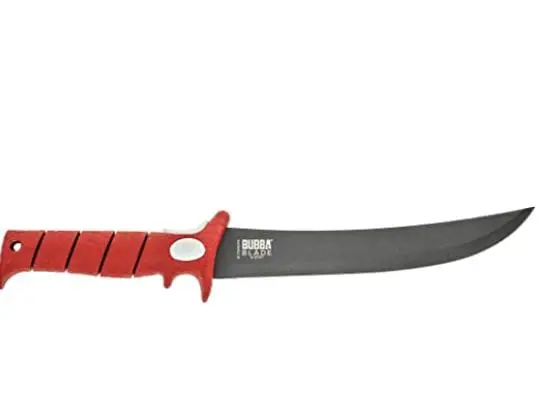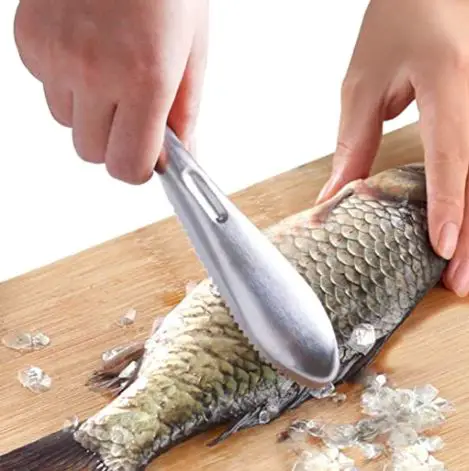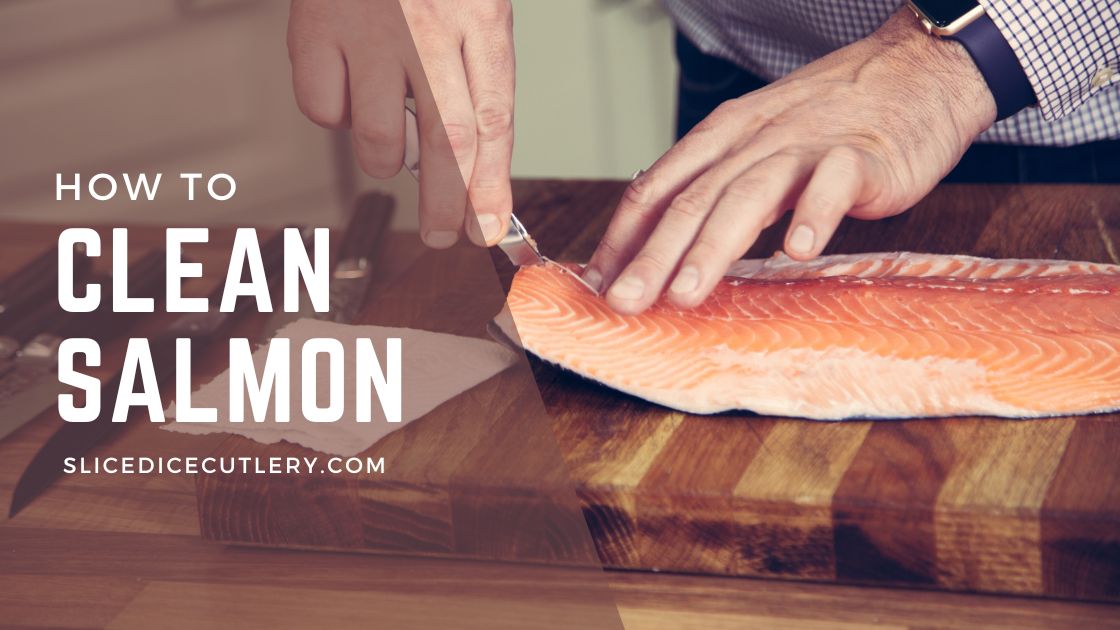Do you know How to Clean Salmon fast and easy? Salmon is an assertively flavored yet surprisingly delicate fish loved by most people. Widely known for the flavor and proven health benefits of eating it, salmon is simply a staple meal worldwide. If you love to eat salmon and want to know the ins and outs of this unique pink fish, to make it at home, it becomes essential to know how to clean salmon.
Eating salmon provides you with many health benefits, and it makes for a fantastic main dish or even breakfast if you prefer salmon with scrambled eggs, and what about sushi? Yum! Whether you’ve caught fresh salmon off the water or you’ve spent the money to buy an expensive piece of salmon, you had better know how to prepare it right.
The process of cleaning salmon might be a bit intimidating, especially for a beginner who will have to deal with bones, guts, and scales. However, when you have the knowledge and the right tools, we promise you it gets easier as you practice more. So grab pen and paper and learn how to clean salmon the right way.
How to Clean Salmon Step by Step
Step One: Get the fish ready for cleaning
A single blow on the top of the fish’s head is more than enough to ensure that the fish is dead. This is the first step in how to clean salmon before cooking.
You’ll only need a fish bat for the job. If you don’t have a fish bat, you can use a similar non-sharp object or slam the salmon’s head into the edge of a rough surface.
Step Two: Remove the anal fins.
This makes it a lot easier to advance with the cleaning process.
The anal fins are found in pairs and located near the bottom end of the fish’s body. Place your knife right behind the fins, make a small cut, and then run the knife forward to remove the fins and toss them in the disposal bucket.
Step Four: Scale the fish
Salmon scales are quite easy to remove compared to other fish types.
All you have to do is place your knife at the tail end of the fish and run it down against the skin as if you’re brushing it towards the head.
While a dull knife or a scale brush is ideal to not stab through the fish, any sharp one will do, but you’ll need to be more gentle and careful. Repeat for both sides.
Step Five: Remove the guts of the salmon.
The visceral insides of the fish should be removed before you slice it into pieces. To do that, you need to put the fish on its back and stick the knife into the hole you’ve created while removing the anal fin.
Run the knife all the way up to reach the mouth of the fish, which will open up the fish and allow you to pull the guts right out of the fish.
Step Six: Remove the head and fins.
With your fish gutted, it’s time to cut the rest of the fins and the head off. Start by cutting the tail off, then align the knife and the head from the gills to cut them off.
Step Seven: Fillet the salmon
Filleting a salmon is a critical job and takes years of practice, so do not fret if it’s not perfect at first.
- Hold the fish from the belly, flap it up and out and look for the salmon’s spine.
- Place the knife horizontally right above the spine and cut into the flesh in a sawing motion.
- Since the spine moves downwards along the fish, tilt the knife ever so slightly while cutting down.
- Once you reach half of the fish, put the belly flap back and gently press on it to brace the knife to cut along the end.
- When you’re done, flip the fish to the other side and repeat the same step so you can remove the spine with as little meat as possible.
Step Eight: Skin the salmon
- To remove the skin, sprinkle some salt over one end of the skin to make it dry and less slippery.
Use a sharp knife to separate the flesh from the skin and slowly peel it off as the knife advances. - Remove the bones and rips off the salmon
- Place the knife parallel and next to the ribs and run it down the edge of the bone. Once the blade is under the bone, angle it up in a sweeping motion to remove the bones without scooping them out and losing a lot of meat.
- The rest of the pin bones can be easily removed with tweezers one by one, whether before or after you cook the salmon.
Common Questions on How to Clean Salmon
How to know if the salmon is fresh?
Check for the following to know if your salmon is fresh:
- A characteristic bulge in their eyeballs
- Their scales will be shiny
- They’ll spring back if you press down on them with one finger
- The gills will be bright red and not dark brown.
How do you clean salmon before cooking?
So you got your salmon from your favorite fresh marketplace, and the skin is on. If the salmon filets are skin-on, it’s a good idea to rinse and dry before cooking. Feel free to follow the steps below:
- Make sure the fish is ready for cleaning
- Cut the anal fins off
- Scale the fish
- Remove the guts of the salmon
- Get rid of the head and fins
- Start filleting the salmon.
Also, if the filets have any fishy smell, experts advise submerging the pieces in 1 quart of water with 1 tablespoon of white vinegar, then rinse with running water. This will remove the bacteria that is on the skin and improve the taste of the fish.
Do you need to wash salmon before cooking it?
You can wash the fish if you feel that it might be coming from somewhere not so clean, and you would like to remove things like scales, fish guts, and other matter.
That said, it is unnecessary to go about washing your salmon before cooking, as the cooking process, if done properly should kill the bacteria that cause food-borne illnesses.
How do you clean raw salmon?
- Wash the whole salmon in clean water, even if you purchased it from the supermarket.
- Scale the fish by scraping gently with a dull knife.
- Start at the tail and move toward the head, keeping the knife at a 45-degree angle. Do both sides, and then rinse off the scales.
- To get the fish, cut along the belly between the fins, starting from the tail to the bottom of the head.
- Remove all of the innards and gills from the fish.
- Thoroughly rinse the inside of the fish to remove any blood.
Should you clean salmon skin?
If you like, you may trim a whole salmon into fillets or steaks and remove the skin.
- Fillet the salmon by cutting along the backbone and ribs, keeping the knife parallel to the table, and removing as much meat as possible.
- To cut a salmon into steaks, make cuts perpendicular to the backbone at 1- to 1 1/2-inch intervals, cutting through the back and ribs.
- Remove the ribs from individual steaks by sliding a knife between the flesh and the rib-belly membrane, then cutting upward to remove the rib bone.
- To skin the salmon, lay the fillets skin-side down on a table and slice the skin off with the knife angled slightly. For large fillets, once a small portion has been loosened, you can sometimes pull off the skin with your hands.
Can you eat salmon skin?
Salmon skin is generally safe for people to eat. However, fish are known to be contaminated by pollutants in our air and water. Chemicals called polychlorinated biphenyls (PCBs) can be absorbed by salmon during their life through their skin and other fish they eat.
How long should salmon sit out before cooking?
Before even thinking about cooking, you should always allow your fish to reach room temperature.
When you add cold fish to a hot pan, it will cook unevenly. It is a good idea to let salmon sit out for 15 to 20 minutes before cooking so that it can warm to room temperature. Do not let it sit out for too long.
How do you know when salmon is done?
The easiest way to see if your salmon has finished cooking is to gently press down on the top of the fillet with a fork or your finger. If the flesh of the salmon flakes, in other words, separates easily along the white lines across the fillet, it has finished cooking.
What tools do you need to clean salmon?
A quality set of cutting knives: a sharp fillet knife is ideal for cutting salmon without wasting edible meat. Ideally, you’d also need a fish scaler brush or a dull knife to scale the salmon too, but a sharp fillet knife can still do the job nicely.
- Cut-resistant gloves: These come handy before you get on with the cleaning project to keep your hand clean and avoid injuring yourself while filleting.
- Knife sharpener: This is useful to keep the knives sharp for better meat recovery and avoid wasting the flesh between bones.
- Broad Cutting Surface: While cutting down the spine, you need the fish to be firm and held straight to avoid losing a lot of meat.
- Fish Bat: Handy when you’ve just caught the salmon out of the water.
- Disposal Bucket: Helpful to keep your boat or kitchen clean while you’re working on the fish and allows for easier disposal when you’re done.
- Tweezers: You’ll need these to remove the small bones, also known as pin bones; it makes the job much easier.
What is the best knife and scaler to clean salmon?
Recommended Products
BUBBA 9 Inch Stiff Fillet Knife
The extreme flexibility stands out among its competitors. The sleek, sporty blade cuts precisely for detailing and plucking out bones. The semi-flexible blade is more lenient and is a great option for cutting through heavier meats such as tuna and/or wahoo.
Perfect for cleaning all types of fish. Flexibility allows for more precise filleting around bones while providing enough rigidity to slice through heavy meat or cut through fish bones. Ideal for salt or freshwater fish.
The construction of the stiff-style fillet knife has little flex, making it controllable and great for any large game fish. It doubles as a great utility knife for meat carvers as the 2 mm-wide blade is ideal for precision cutting. Other kitchen knives you might find useful for salmon were included in our Most Expensive Chefs Knives list.

Features:
- Reliable
- Ease of use
- Durable
- 9” blade
- Non-Slip Grip
Fish Scaler Brush
Fish Scaler Brush is made of High-quality food-safe 304 stainless steel; it is sturdy, lightweight, anti-rust. High-quality food safe 304 stainless steel Fish Scaler Remover, non-slip handle is designed ergonomically in sturdy shape.
Specifically designed grooves help catch loose scales without them splattering all over the place or onto your clothes.

Features:
- Safety design
- Stainless steel
- Sturdy, lightweight, anti-rust
- High quality
Additional Tips on How to Clean Salmon
- When you open the fish up, you’ll find the roe/milt membranes with a mushy appearance that you can remove simply by tugging and pulling several times.
- If you don’t like eating the skin, you can remove it easily after cooking; keeping it on while you cook is strongly recommended.
- The skin seals off the moisture and protects the meat while being grilled to avoid sticking to the pan.
- When removing the bones, with your fillets cut and ready, you can refrigerate the fillets before this step to firm them up first.
- Once you’ve filled your bucket with remains of salmon parts that you don’t use, you can easily get rid of them by tossing the bucket’s content back in the water to feed larger fish.



